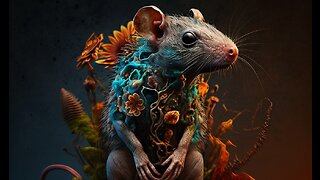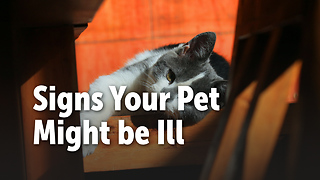You know about giardia and what it can cause in your pet.
You know about giardia and what it can cause in your pet.
Let's talk about how pets become infected with this intestinal parasite. When a pet is already infected with Giardia lamblia, it stays in its intestines. When the pet defecates, it excretes cysts of the protozoan in its feces, contaminating the environment.
Extremely resistant, the protozoan can survive for months in the environment, staying in the feces found on the street, in the water or even in the pets' fur. It is then ingested by the animals and starts a new cycle of giardia.
We have already talked about what Giardia lamblia is and how animals get infected with it. Now, let's go a step further and explain how to recognize this protozoan in pets.
One of the main difficulties in identifying giardia in dogs and cats is that it manifests itself mainly by diarrhea. Therefore, it is common that it is confused with diseases of lesser severity, which contributes to the evolution of the disease.
No matter what the suspicion is, it is always best to take your friend to the vet. However, some symptoms of giardia help to identify whether the dog or the kitty has the parasite. See the examples below: Liquid or pasty feces, with strong smell and that can be greenish, lack of appetite, loss of weight, hair without shine and with accentuated fall, vomits, abdominal sensibility, flatulence, dehydration and weakness.
In some cases, the animal may have mucus, like a jelly covering the feces, or blood in the feces. In addition, the more the disease progresses without treatment, the greater is the chance of the pet becoming dehydrated. Seek help as soon as possible!
Although reports of symptoms by the guardian can help in the diagnosis, one of the main ways to be sure that it is giardiasis is through the parasitological examination of feces.
It is worth pointing out that, normally, three samples should be collected on alternate days. This is because the cysts are not eliminated in all bowel movements. A rapid test, such as a pregnancy test, can accurately diagnose the disease.
The treatment of giardiasis is done with antiprotozoal drugs, specific for the problem. In addition, it is essential to correctly clean the environment and the contaminated pet's accessories. Follow the veterinarian's orientations to the letter!
As we said, people can contract giardia in several ways, being more common the ingestion of contaminated water. However, the contamination also occurs from the contact of the guardian with animal feces.
In fact, this contact happens when taking the hand to the mouth after collecting the pet's feces or even playing with it and ingesting a protozoan cyst in the animal's hair or bed. Therefore, always wash your hands after activities.
Currently, dogs and cats can count on the vaccine, which, despite not being 100% effective, helps to make the symptoms of giardia milder in case of contamination.
The vaccine also controls the environmental contamination by decreasing the number of parasite cysts excreted in the environment, as well as the time in which the pet excretes them by feces.
In addition, some hygiene measures can be of great help in prophylaxis of giardiasis. For this reason, here are some tips to avoid direct contact with the parasite: Never let your pet smell or lick the feces of other animals on the street , When you get home, wash your hands well and take off your shoes, since they can bring diseases from the street to the internal environment , Keep the environment in which your pet lives and eats always clean ,Offer only filtered or boiled water to the pet , During the treatment of the pet with the disease, use products based on quaternary ammonia in the environment to eliminate the cysts and prevent further contamination, If you have more than one pet, it is important that all do stool tests and treatment when one of them shows signs of contamination and Make regular visits to the veterinarian with your pet. Among other precautions, the professional may recommend wormers every four to six months.
-
 7:00
7:00
Jo Wilkens
1 year agoYour Pet has a Microbiome TOO!!
7 -
 1:12
1:12
ZEPHYR A IMAGINATION
1 year agoINFECTED PETS / AI generated
7 -
 1:51
1:51
gcontent
6 years agoSigns Your Pet Might be Ill
4.13K -
 8:23
8:23
Sun Fruit Dan
8 months agoThe Fenbendazole (Dog) Parasite Protocols
2.61K5 -
 36:34
36:34
LiveDiseaseFree
4 months ago $0.07 earnedCan I Get Parasites From My Pet?
3611 -
 0:58
0:58
WideOpenPets
5 years ago10 Common Poisonous Plants Your Pets Should Avoid
1.15M -
 1:45
1:45
KTNV
1 year agoPet experts warn of parasites, bacteria found in puddles
10 -
 0:43
0:43
RAW DOG FOOD AND COMPANY
6 months agoBeware of the Pet Food Isle
10 -
 8:36
8:36
MYBODYMYBABY
1 year ago16. Toxoplasmosis-Lysteria-pets
12 -
 2:26
2:26
Dr. Eric Berg
2 years agoDogs Can Smell Covid-19 Infection
5413